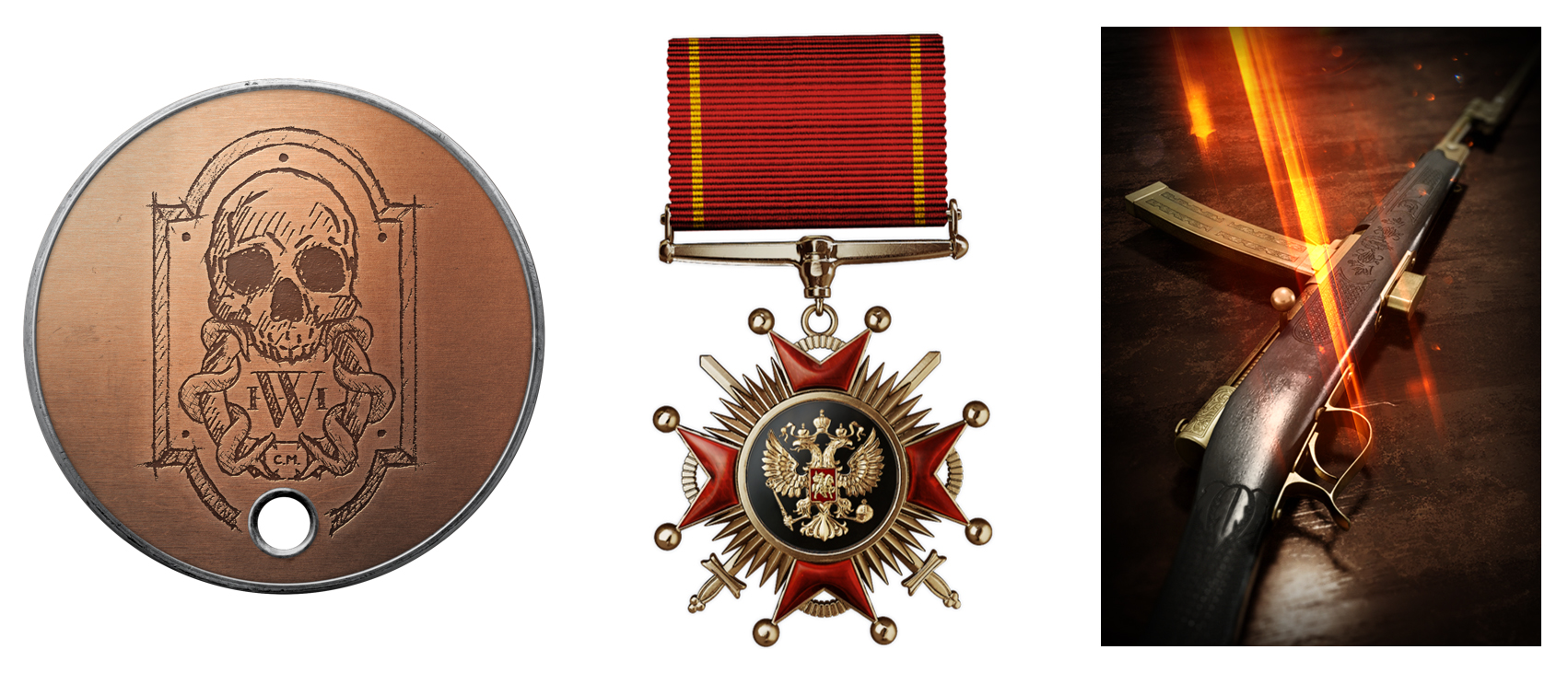2D artwork is a major part of developing the UI. When designing graphic elements such as dog tags, metals, thumbnails, and loading screens, think about how all these elements fit within the visual identity of the game.

Here is a list of possible 2D elements a UI artist or designer will need to consider for the game:
- Rendered game assets and levels
- Wallpapers and screenshots
- Photography
- Textures
- Dashboard and background imagery
- Banners
- Thumbnails
- Avatars and profile images
Rendered game assets and levels
As the game begins to take shape, the use of rendered imagery from in-game objects or levels might become necessary to help with body text and to shape the presentation of the game. Creating such imagery might require an artist to set up cameras and lighting in a scene. Also, art direction and composition will play a major part in driving the style and tone of the final images, and a number of different disciplines will have to work together to create the final renders.
Depending on the size and specialization within your development team, such processes might be handled by many artists or as few as one. For example, a weapon render is usually done as follows:
- A concept artist provides composition sketches.
- A hardware artist sets up the weapon that displays the correct attachments and surface material.
- An environment artist sets up a scene to place the weapon to suit the context of the weapon.
- A lighting artist establishes the mood and gets the lights to work with the materials of the weapon and surrounding props.
- The composition is captured, and a concept artist provides final grading and post-processing to the final render.
Wallpapers and screenshots
Similar to rendered imagery, screenshots showcasing gameplay, characters, or levels might be needed to build content for the game.
Photography
Having an understanding of photography, particularly of lens types and lighting setups, will help you use modern-day game engines that are moving towards full PBR (physically based rendering). Simulating the properties of real-life cameras, lighting, and materials will let you mimic the look and feel of cinema. Using accurate models and exercising greater artistic control over composition will let you create a highly immersive game world. Knowledge of photography will also benefit artists who want to recreate reference photographs in software by using practical techniques learned through experience.
The following are the main categories of the subject matter captured with a photographic lens :
- Field of View (FOV) is the width of an image the lens can capture
- Focus distance is a range at which objects will be in focus
- Depth of Field (DOF) is the range of focus
- Aperture is the opening of the lens that lets light enter the camera
- ISO defines the sensitivity of the image; higher ISO creates more noise
- Shutter speed is the time the shutter stays open, which affects the amount of light entering the camera
- Macro lens is used to capture tiny details at close range and extremely shallow DOF; this requires more light
- Prime lens has a fixed FOV and cannot be changed
- Mid-range lens has a variable FOV and is used to capture a range of subject matter at various distances
- Telephoto lens is used to capture subject matter at long distances
Photography can also be used as artwork for in-game textures.
Textures
Coming Soon
Dashboard / background Imagery
Coming Soon
Banners
Coming Soon
Thumbnails
Coming Soon
Avatars and profile images
Coming Soon